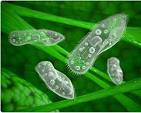Comprehensive analysis of multi-omics single-cell data using the single-cell analyst
Single-cell analyst supports a wide range of data types, including six single-cell omics: single-cell RNA sequencing (scRNA-sequencing), single-cell assay for transposase accessible chromatin sequencing (scATAC-seq sequencing), single-cell immune profiling (scImmune profiling), single-cell copy number variation, cytometry by time-of-flight, and flow cytometry and spatial transcriptomics, and enables researchers to perform integrated analyses without requiring programming skills. The platform offers both online and offline modes, providing flexibility for various use cases. It automates critical analysis steps, such as quality control, data processing, and phenotype-specific analyses, while also offering interactive, publication-ready visualizations.
With over 20 interactive tools for intermediate analysis, single cell analyst simplifies workflows and significantly reduces the learning curve typically associated with similar platforms. This robust tool accommodates datasets of varying sizes, completing analyses within minutes to hours depending on the data volume, and ensures efficient use of computational resources. By democratizing the complex process of multi-omics analysis, single-cell analyst serves as an accessible, all-encompassing solution for researchers of diverse technical backgrounds. The platform is freely accessible at www.singlecellanalyst.org.
In our pursuit of fostering accessibility and efficiency in single-cell omics research, we developed single-cell analyst, a comprehensive multi-omics analytic platform that supports six single-cell omics types and spatial transcriptomics. The platform encapsulates popular single-cell omics workflows, providing a significant boon to researchers without a substantial computational background. By eliminating the need for dependency downloads and circumventing the complexities often associated with software installations, single-cell analyst addresses critical barriers to entry, enabling broader adoption of single-cell technologies.
Single cell analyst excels in its efficiency, user-friendliness, and broad scope, making it a formidable resource in the single-cell analysis landscape. By streamlining workflows, automating key steps, and offering interactive, publication-ready visualizations, it opens avenues for bench scientists to delve into multi-omics analysis, delivering advantages to a broad spectrum of the research community. Its coding-free design and integrative analysis capabilities lower the technical threshold, empowering researchers from diverse backgrounds to explore and interpret complex single-cell data with ease. The ability of the platform to analyses datasets across different omics fosters a systems-level understanding of biological phenomena, offering unprecedented flexibility for multi-omics analyses.
This capacity accelerates discovery processes and empowers researchers to generate insights into cellular heterogeneity, tissue architecture, and molecular mechanisms. By paving the way for innovative approaches to complex questions in biology and medicine, single-cell analyst not only drives the adoption of single-cell technologies but also broadens their application and facilitates interdisciplinary collaboration, representing a transformative advancement in the field of single-cell research.
single-cell RNA sequencing, transcriptomic profiling, cellular heterogeneity, scRNA-seq, gene expression analysis, cell type identification, single-cell genomics, microfluidics, droplet-based sequencing, spatial transcriptomics, cell lineage tracing, single-nucleus RNA-seq, multi-omics integration, epigenomics, immune cell profiling, tumor microenvironment, bioinformatics pipelines, trajectory analysis, high-throughput sequencing, data visualization
#SingleCell, #scRNAseq, #CellAtlas, #Transcriptomics, #SingleCellGenomics, #CellHeterogeneity, #SpatialTranscriptomics, #SingleCellAnalysis, #Bioinformatics, #Microfluidics, #CellLineage, #ImmuneProfiling, #TumorMicroenvironment, #SingleNucleusRNAseq, #MultiOmics, #Epigenomics, #TrajectoryInference, #GeneExpression, #HighThroughput, #DataVisualization
International Conference on Genetics and Genomics of Diseases
Visit: genetics-conferences.healthcarek.com
Award Nomination: genetics-conferences.healthcarek.com/award-nomination/?ecategory=Awards&rcategory=Awardee
Award registration: genetics-conferences.healthcarek.com/award-registration/
For Enquiries: contact@healthcarek.com
Get Connected Here
---------------------------------
---------------------------------
in.pinterest.com/Dorita0211
twitter.com/Dorita_02_11_
facebook.com/profile.php?id=61555903296992
instagram.com/p/C4ukfcOsK36
genetics-awards.blogspot.com/
youtube.com/@GeneticsHealthcare

Comments
Post a Comment